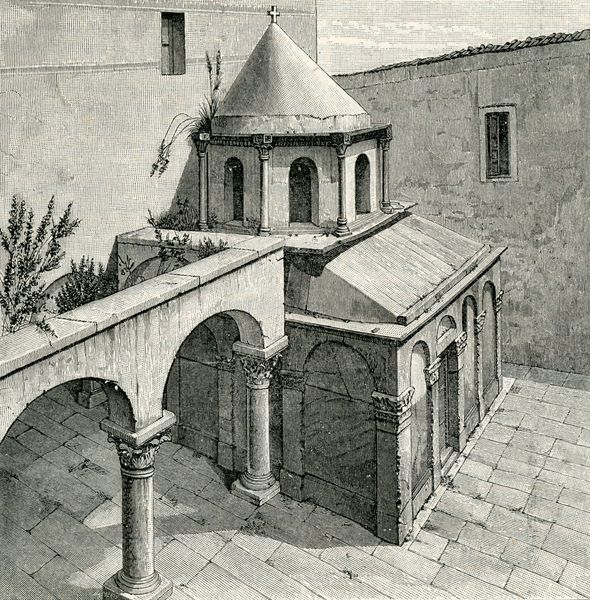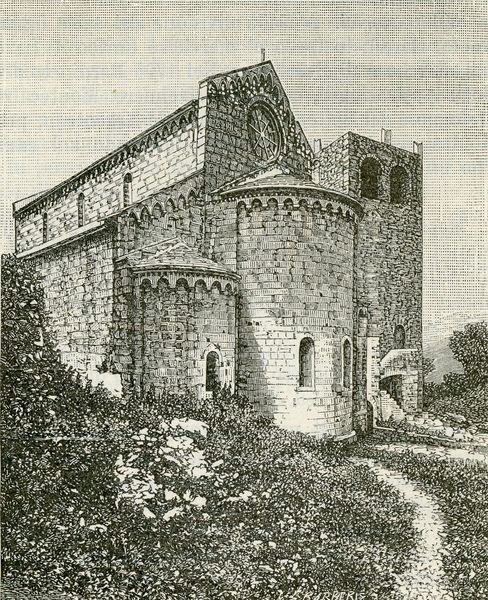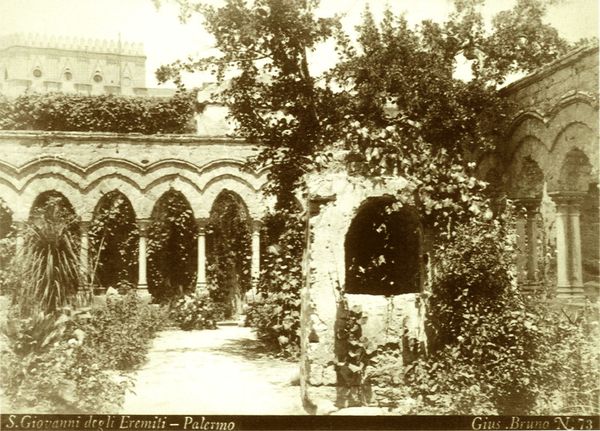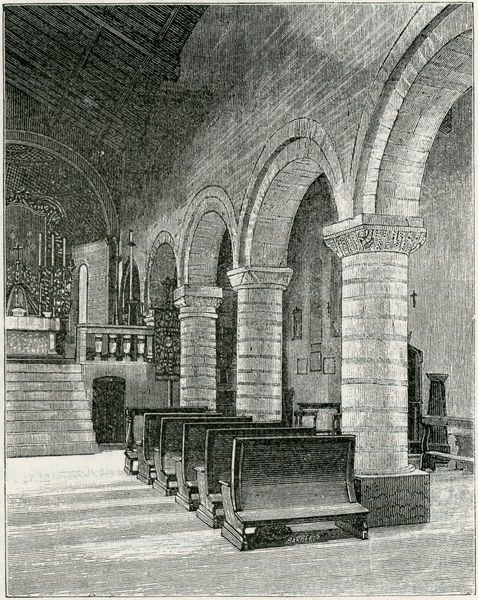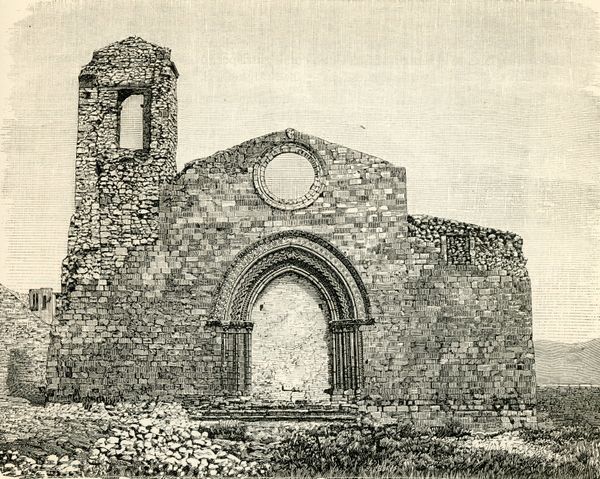
drawing, print, etching, paper, ink, architecture
#
drawing
#
medieval
# print
#
etching
#
landscape
#
paper
#
historic architecture
#
romanesque
#
ink
#
geometric
#
line
#
architecture
Copyright: Public domain
Giuseppe Barberis created this artwork of the Chiostro Dell’ex-convento Di San Francesco, using etching. The print captures the architectural details of the cloister, with its arches and columns, and invites reflection on the historical and cultural contexts embedded in such spaces. The cloister represents a place of both spiritual retreat and social interaction. Historically, convents provided women an alternative to marriage, and functioned as centers of learning, artistic expression, and relative autonomy within patriarchal societies. Yet, the very architecture of the cloister also speaks to enclosure and separation. Who was allowed in these spaces and who was excluded? What power dynamics were at play within the convent walls? Barberis invites us to ponder the layers of history, gender, and social structure which are etched into the stones themselves. The figures in the archway remind us that these spaces were, and perhaps continue to be, imbued with human presence, experience, and memory.
Comments
No comments
Be the first to comment and join the conversation on the ultimate creative platform.
